Your perfect signature perfume starts with identifying floral notes that resonate with your personal preferences and body chemistry. Begin by exploring classic florals like rose and jasmine for elegance, or try modern blends with orange blossom and neroli for freshness. You'll want to balance your chosen florals with complementary middle notes and anchoring base notes for longevity. Understanding the structure of fragrance notes will help you craft your ideal signature scent.
Understanding Your Personal Scent Preferences
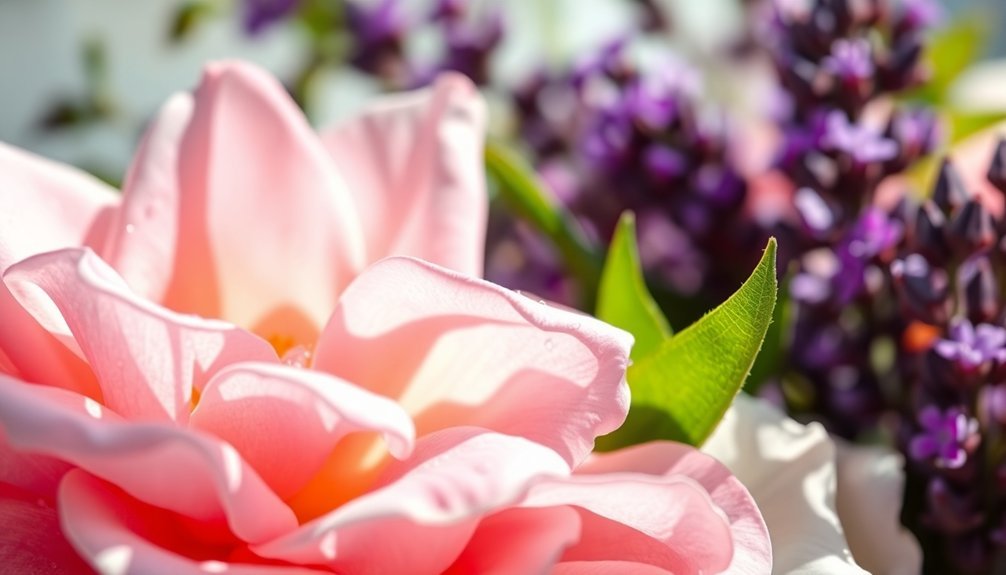
When it comes to finding your signature scent, understanding your personal fragrance preferences is the essential first step. Start by identifying which scents naturally draw you in throughout your daily life.
Keep a fragrance journal to track your reactions to different perfumes you try, noting how each one makes you feel and whether it aligns with your personality. Research shows that scent triggers memories intensely, so pay attention to which fragrances evoke positive emotional responses.
Don't feel confined by traditional gender norms when selecting your scent. Your individual skin chemistry plays a vital role in how a fragrance develops, so it's important to test perfumes directly on your skin rather than just smelling them from the bottle.
Pay attention to how certain fragrance families resonate with you – whether you're drawn to light florals, warm orientals, fresh citrus, or earthy woody notes. These natural inclinations will guide you toward your perfect signature scent.
The Power of Top Floral Notes
While many fragrance elements contribute to a perfume's character, top floral notes wield unique power as your first sensory encounter with a scent.
These initial impressions set the tone for your entire fragrance experience, typically lasting 15-30 minutes before gracefully shifting to middle notes.
When selecting your signature scent, consider how top floral notes can enhance your personal style:
- Classic florals like rose and jasmine offer timeless elegance and versatility.
- Fresh combinations of orange blossom and neroli create bright, uplifting experiences.
- Modern blends incorporating gardenia with gourmand or aquatic elements provide unique, contemporary appeal.
Your choice of top notes isn't just about immediate appeal – it's about how they interact with other components to create a harmonious evolution throughout the day, reflecting your distinctive personality and preferences. For a fresh and youthful approach to florals, consider fragrances with sweet cloudberries like Marc Jacobs Daisy Love.
Selecting Your Middle Note Harmony
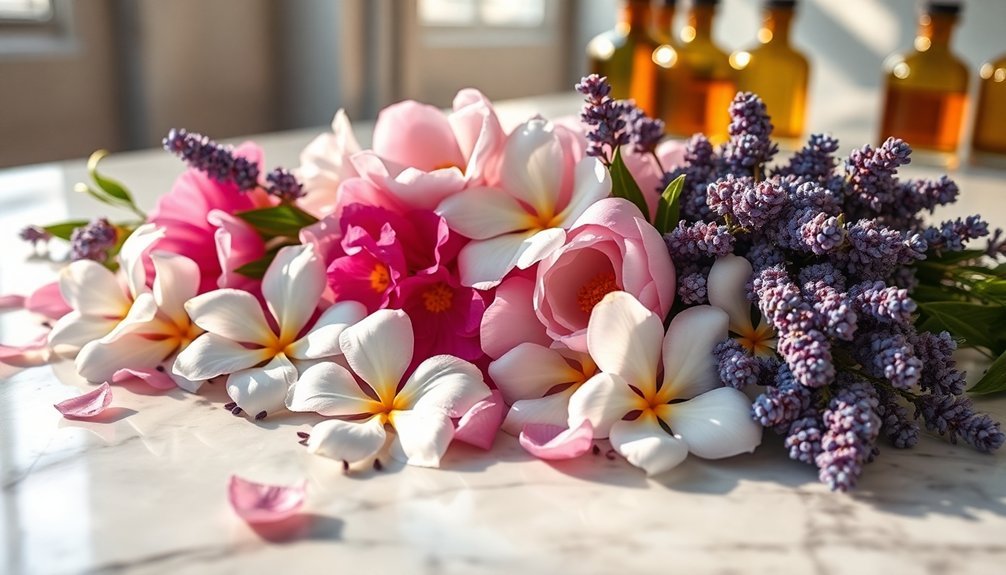
When crafting your signature scent, you'll want to explore classic floral-spice combinations like rose with cardamom or jasmine with cinnamon, which can create a complex and intriguing heart for your fragrance.
Middle notes make up the majority of your perfume's personality, lasting anywhere from one to five hours on your skin. The ideal perfume composition includes 50-75% middle notes for a well-balanced fragrance. You can build a more memorable fragrance by selecting heart notes that complement each other, such as pairing ylang ylang's tropical sweetness with the warm spiciness of clove or combining lavender's herbal freshness with the citrusy kick of cardamom.
Floral-Spice Middle Note Pairings
Creating the perfect middle note harmony requires understanding how floral and spice notes interact to form a balanced fragrance profile.
You'll want to reflect on popular combinations like rose with cinnamon or jasmine with cardamom to achieve a warm, sophisticated scent that reflects your personality.
When selecting your floral-spice pairing, keep these essential tips in mind:
- Choose lighter florals with stronger spices to prevent an overly sweet profile.
- Blend citrusy spices with fresh florals for an invigorating spring-like aroma.
- Incorporate woody spices like cedar or sandalwood to add depth and staying power.
Remember to test your chosen combinations before committing.
Your middle notes should make up 50-75% of your perfume blend, ensuring your signature scent maintains its character throughout the day while shifting smoothly between top and base notes.
Heart Notes That Endure
The heart notes of your signature scent serve as its defining core, making up nearly 70% of the fragrance's composition and lasting several hours on your skin. These notes emerge after the top notes fade, typically within minutes of application, and they'll shape your perfume's unique character.
| Heart Note Type | Common Examples |
|---|---|
| Floral | Jasmine, Rose, Ylang-ylang |
| Spicy | Cinnamon, Cardamom, Pepper |
| Fruity | Apple, Peach, Blackcurrant |
| Herbal | Lemongrass, Pine |
| Natural | Geranium, Mint, Lavender |
You'll notice these middle notes developing and blossoming on your skin for up to three hours. Your body chemistry plays a vital role in how they evolve, which is why the same perfume can smell slightly different on each person. For longer-lasting results, apply to your pulse points where the fragrance can truly flourish.
Balancing Base Notes for Lasting Impact
When building your signature scent, you'll find that layering complementary fragrances enhances the staying power of base notes like vanilla and sandalwood.
Choosing earthy base notes, such as patchouli or amber, creates a strong foundation that anchors your perfume throughout the day.
Your floral fragrances will last considerably longer when paired with deep base notes, especially in higher concentrations like Eau de Parfum.
Layering Complements Base Notes
Because base notes form the foundation of your signature scent, mastering their balance through proper layering techniques can transform an ordinary fragrance into something extraordinary.
To achieve the perfect blend, you'll want to start with stronger, concentrated fragrances first, allowing them to settle before adding lighter notes.
When layering your base notes, follow these essential steps:
- Apply your most concentrated fragrance containing base notes like musk, amber, or vanilla to pulse points.
- Wait 15-20 minutes for the scent to settle and bond with your skin.
- Layer lighter, complementary scents on top, maintaining a 3:2:1 ratio of top, middle, and base notes.
Remember to take into account your body chemistry when selecting base notes, as this will greatly impact how the final fragrance develops and lasts throughout the day.
Anchoring With Earth Tones
Building upon your layering foundation, earth tones serve as powerful anchors that can dramatically enhance your signature scent's staying power.
You'll find rich wood notes like sandalwood and cedarwood create a warm, enduring base that keeps your fragrance grounded throughout the day.
For maximum impact, you'll want to combine these earthy elements with complementary base notes.
Consider pairing patchouli or vetiver with musk to achieve both depth and sensuality. These combinations won't just make your perfume last longer – they'll create a sophisticated profile that evolves beautifully on your skin.
When you're selecting your signature scent, look for fragrances that feature these earth-toned base notes alongside vanilla or tonka bean.
This balance guarantees your perfume maintains its character for 6-8 hours while projecting a natural, harmonious aroma that's uniquely yours.
Deep Florals Last Longer
Although floral fragrances captivate with their delicate aromas, they need robust base notes to achieve true staying power.
When you're selecting your signature scent, look for perfumes that combine your favorite florals with anchoring ingredients like musk, amber, or sandalwood. These base notes don't just extend wear time—they create a more sophisticated, multi-dimensional fragrance that evolves throughout the day.
To maximize your perfume's longevity:
- Apply an unscented moisturizer before spritzing to help the fragrance cling to your skin
- Target pulse points, including wrists, neck, and behind ears, for ideal diffusion
- Consider layering with matching scented body products to enhance staying power
Seasonal Floral Combinations That Work
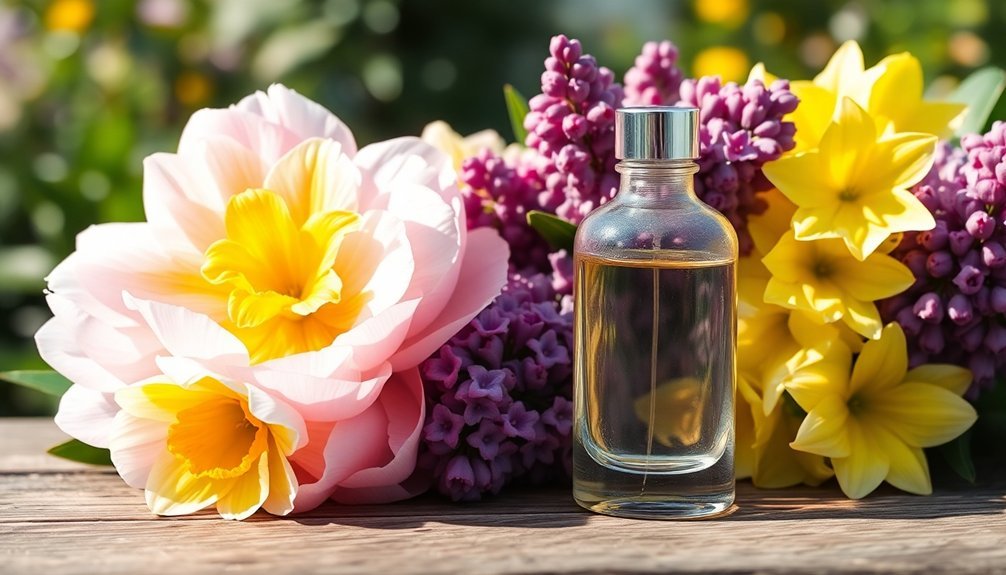
The art of selecting seasonal floral combinations can transform your signature scent throughout the year. In spring, you'll want to embrace light, fresh notes like jasmine and cherry blossom, while summer calls for citrusy and tropical combinations.
| Season | Daytime | Evening |
|---|---|---|
| Spring | Lavender + Lemon | Jasmine + Rose |
| Summer | Bergamot + Fresh Rose | Citrus + Mint |
| Both | Neroli | Sandalwood base |
For spring daytime wear, try combining lavender essential oil with subtle rose notes, or opt for bergamot with citrusy lemon for an invigorating kick. As evening approaches, layer jasmine with rose for a rich, intoxicating effect. In summer, shift to revitalizing blends of citrus bergamot with fresh rose for day, while evening calls for cooling combinations of citrus and mint or tropical fruits.
Pairing Florals With Complementary Scents
Understanding how to pair florals with complementary scents can elevate your signature perfume from simple to sophisticated.
You'll find that certain combinations create more depth and character in your fragrance, making it uniquely yours.
- Combine florals with citrus notes like bergamot or lemon to add freshness and brightness – think jasmine with grapefruit for a crisp, uplifting scent.
- Layer your floral perfume with woody notes such as sandalwood or vetiver to ground the scent and add sophistication, similar to Chanel's Coco Mademoiselle.
- Experiment with spicy or oriental notes by adding cardamom, cinnamon, or amber to create an exotic twist on traditional florals.
For a playful touch, try fruity notes like strawberry or blackberry, which naturally enhance the sweetness of floral scents while adding youthful energy.
Mixing Ratios for Perfect Floral Blends
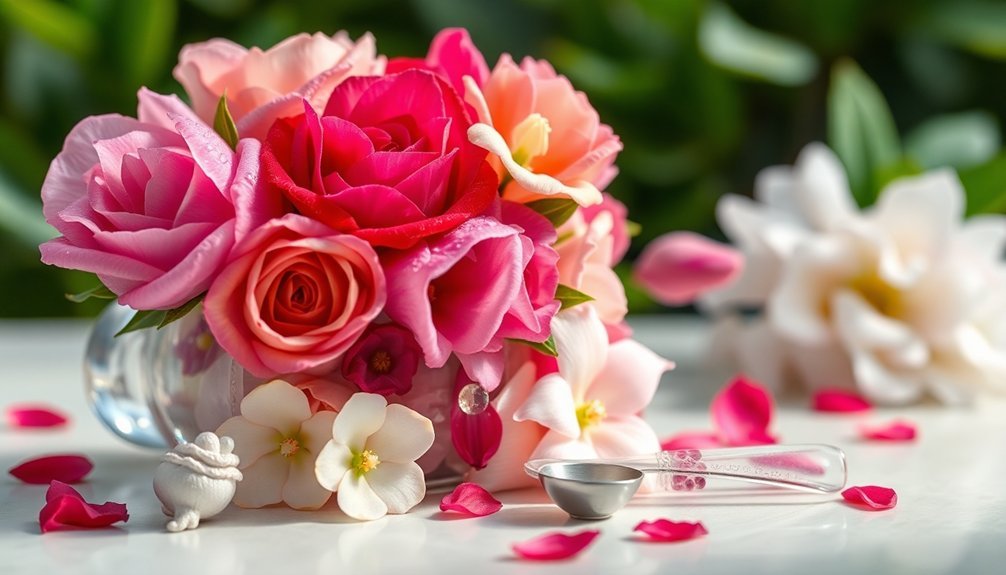
Now that you've explored complementary scent combinations, mastering the right mixing ratios will take your floral blends to the next level.
Start with the classic 30/50/20 ratio: 30% top notes like citrus oils, 50% middle notes featuring your chosen florals, and 20% base notes such as sandalwood to anchor the blend.
If you're seeking a deeper, more enduring scent, try the 20/30/50 ratio with a stronger base note presence.
Remember, these ratios aren't set in stone. Add your oils drop by drop, testing as you go. Let your blend rest for a few days to allow the aromas to meld together naturally.
Keep detailed notes of your combinations, and use coffee beans between tests to reset your nose's sensitivity.
Always dilute your final blend properly for safe wear.
Creating Your Signature Scent Formula
Building your signature scent formula requires a methodical approach that begins with selecting and layering essential oils.
You'll want to start with your base notes, which provide the foundation and longevity of your fragrance. Choose anchoring scents like sandalwood or patchouli, then build upward with your heart notes.
For a balanced floral composition, follow these essential steps:
- Layer your chosen floral notes strategically – rose and jasmine work beautifully as heart notes.
- Add complementary scents from different fragrance families to create depth.
- Finish with light, fresh top notes that'll create an inviting first impression.
Remember that each oil can perform differently depending on its companions.
You'll need to experiment with various combinations while checking IFRA guidelines to guarantee safe dilution rates for each essential oil.
Testing and Adjusting Your Custom Blend

Once you've assembled your essential oils, testing and adjusting your custom blend becomes a methodical process that rewards patience and attention to detail.
Start by evaluating each oil individually on scent strips, labeling them carefully and noting their characteristics and note categories.
To create your blend, hold different oil strips together to test combinations, selecting up to three harmonious oils for each note category.
Begin with base notes, followed by middle and top notes, using a standardized dropper for precise measurements. A good starting ratio is 50% base, 30% heart, and 20% top notes.
Let your final blend mature for several days, using coffee beans between tests to clear your nasal receptors.
Make adjustments as needed, and don't forget to document every step of your formula for future reference.
Frequently Asked Questions
How Long Does a Custom Floral Perfume Typically Last Before Expiring?
Your custom floral perfume will typically last 3-5 years if stored properly. You'll get the best longevity by keeping it in a cool, dark place and avoiding exposure to heat and sunlight.
Can Certain Floral Notes Trigger Allergies or Skin Sensitivities?
Yes, you'll find that common floral notes like rose, jasmine, and ylang ylang can trigger allergic reactions. It's best to patch test new fragrances, as they may cause skin sensitivities or contact dermatitis.
Which Floral Notes Work Best for Men's Cologne?
You'll find that iris, geranium, lavender, and rose work exceptionally well in men's cologne. These notes add sophistication while maintaining masculinity, especially when they're paired with woody or citrus base notes.
Do Natural and Synthetic Floral Notes Blend Well Together?
Yes, you'll find that natural and synthetic floral notes blend wonderfully together. Your fragrance can benefit from natural notes' complexity while synthetic notes provide consistency and longevity. It's a perfect balance of qualities.
How Does Temperature and Humidity Affect Floral Perfume Performance?
Your floral perfume's performance varies greatly with climate. In heat, it'll evaporate faster but project more intensely. Cold weather extends longevity but reduces projection. High humidity enhances staying power, while dry conditions diminish it.
In Summary
Your perfect signature perfume is a reflection of your unique personality and scent preferences. Now that you've explored the world of floral notes, you're ready to experiment with different combinations until you find your ideal blend. Remember, there's no rush – take time to test your creations, adjust the ratios, and let the scents develop on your skin. Trust your instincts, and you'll create a fragrance that's distinctly yours.
References
- https://www.sustainablebotanicals.com/blog/beyond-perfume-creating-unique-signature-scents-with-rose-oil-in-your-personal-fragrance/
- https://www.fragrancex.com/blog/fragrance-notes/
- https://methrashop.co/blogs/news/floral-perfume-exploring-the-most-popular-ingredients
- https://www.perfumestars.com/perfume-notes/floral-notes/
- https://www.vinevida.com/blogs/our-blog/creating-a-signature-scent
- https://www.nisarabeauty.com/blogs/blogs/why-perfume-is-the-perfect-reflection-of-your-unique-identity
- https://80muze.com/blogs/news/the-psychology-of-fragrance-preference-and-personality
- https://www.pairfum.com/understanding-your-signature-scent/
- https://www.sylvaine-delacourte.com/en-us/guide/choose-a-perfume-by-personality
- https://whoiselijah.us/blogs/news/understanding-fragrance-a-guide-to-finding-your-signature-scent
- https://www.fragranceoutlet.com/blogs/article/our-top-10-floral-perfumes-for-may-2024
- https://www.marieclaire.com/beauty/best-floral-fragrance/
- https://nyc.ph/blogs/inspiration/the-power-of-floral-scents-how-they-impact-the-science-of-attraction
- https://www.whowhatwear.com/best-floral-perfumes
- https://www.edensgarden.com/blogs/news/understanding-top-middle-and-base-notes-in-perfume
- https://www.truefittandhill.ca/blogs/journal/how-to-mix-and-match-fragrances
- https://www.vedaoils.com/blogs/essentialoils/top-middle-base-notes
- https://www.maison21g.com/articles/how-to-mix-perfumes-creating-the-perfect-fragrance-combination
- https://www.candlescience.com/the-fragrance-wheel-notes-families-and-how-to-use-it/
- https://us.shayandblue.com/blogs/nose-dive/layering-101-how-to-layer-perfume-to-create-a-signature-scent

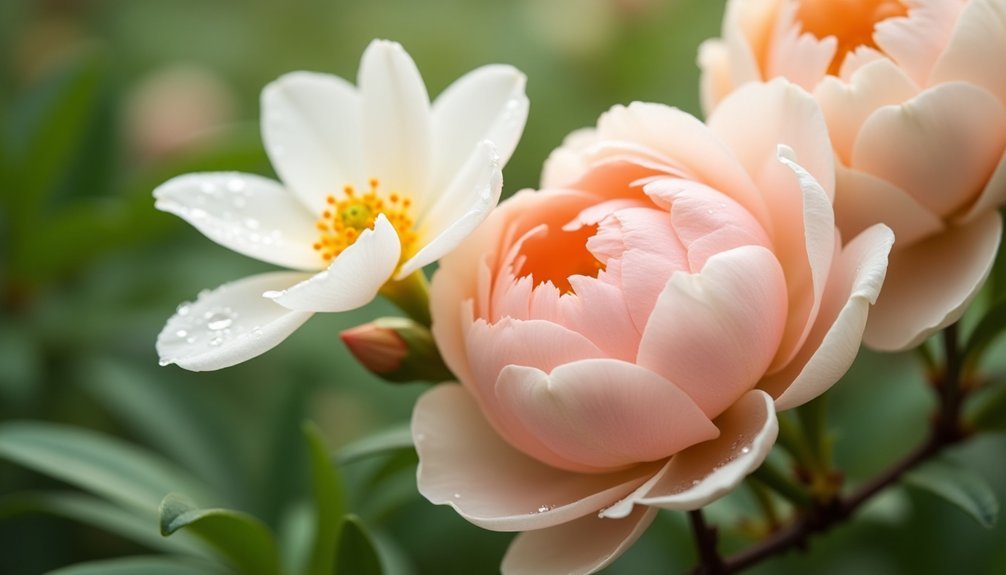



Leave a Reply